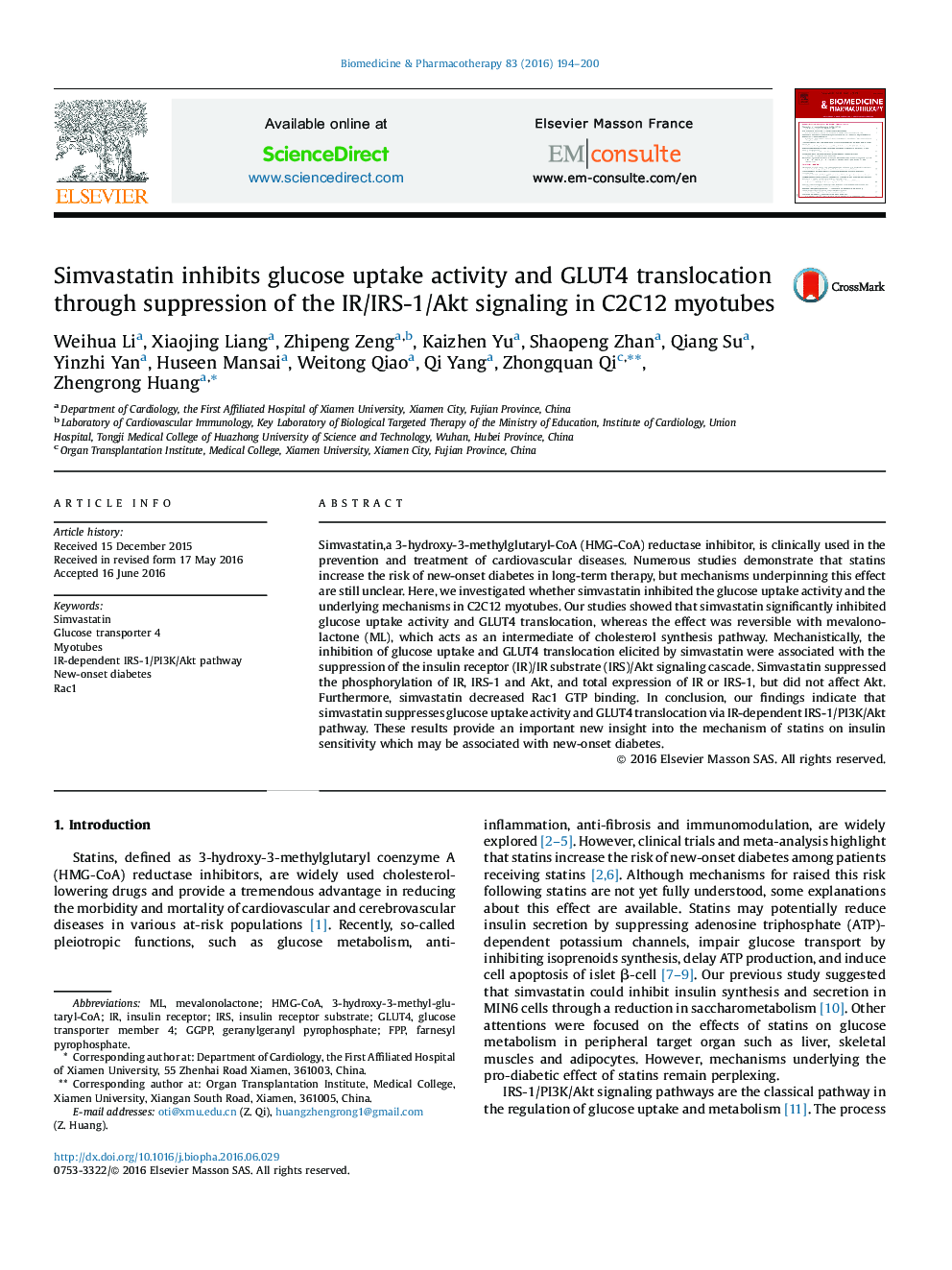| Article ID | Journal | Published Year | Pages | File Type |
|---|---|---|---|---|
| 2524663 | Biomedicine & Pharmacotherapy | 2016 | 7 Pages |
Simvastatin,a 3-hydroxy-3-methylglutaryl-CoA (HMG-CoA) reductase inhibitor, is clinically used in the prevention and treatment of cardiovascular diseases. Numerous studies demonstrate that statins increase the risk of new-onset diabetes in long-term therapy, but mechanisms underpinning this effect are still unclear. Here, we investigated whether simvastatin inhibited the glucose uptake activity and the underlying mechanisms in C2C12 myotubes. Our studies showed that simvastatin significantly inhibited glucose uptake activity and GLUT4 translocation, whereas the effect was reversible with mevalonolactone (ML), which acts as an intermediate of cholesterol synthesis pathway. Mechanistically, the inhibition of glucose uptake and GLUT4 translocation elicited by simvastatin were associated with the suppression of the insulin receptor (IR)/IR substrate (IRS)/Akt signaling cascade. Simvastatin suppressed the phosphorylation of IR, IRS-1 and Akt, and total expression of IR or IRS-1, but did not affect Akt. Furthermore, simvastatin decreased Rac1 GTP binding. In conclusion, our findings indicate that simvastatin suppresses glucose uptake activity and GLUT4 translocation via IR-dependent IRS-1/PI3K/Akt pathway. These results provide an important new insight into the mechanism of statins on insulin sensitivity which may be associated with new-onset diabetes.
